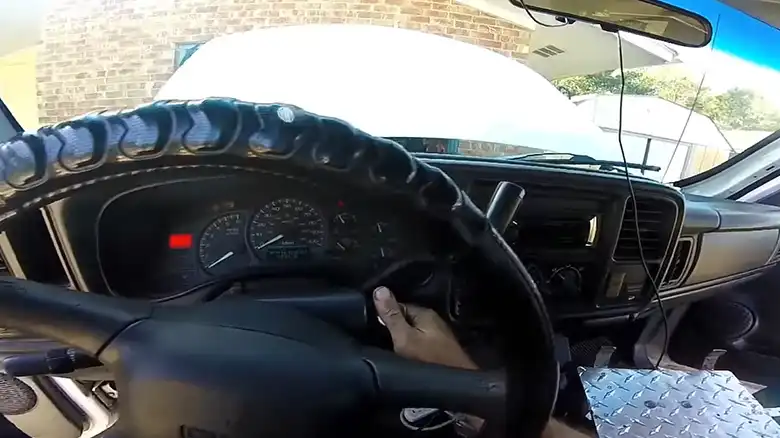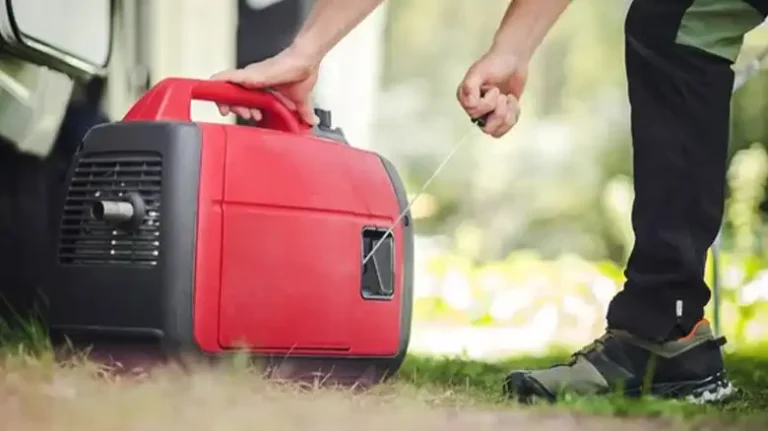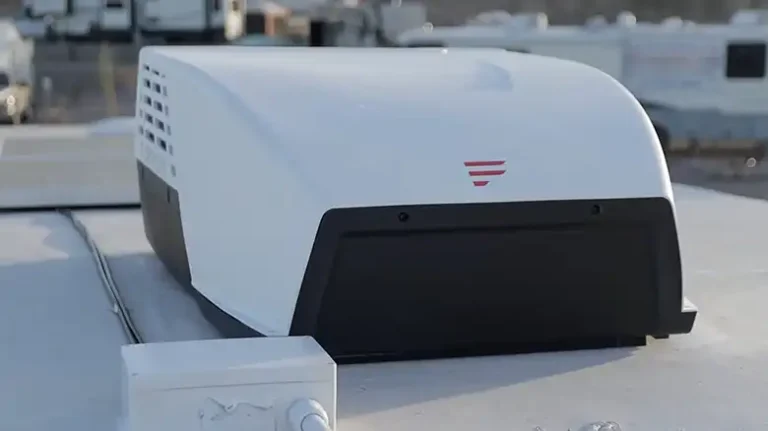RV Will Not Start No Dash Lights
Oh man, I know that panic when your RV refuses to start and you don’t even see the dash lights come on! Basically, your rig lacks enough electrical power to activate things. Why the power loss? In most cases either the battery charge has drained too low, a fuse blew cutting off juice, or the ignition switch itself went bunk.
Luckily, a few easy tests checking battery voltage, looking for broken fuses, or making sure the ignition switch works right should uncover the culprit. Then you can get back on the road! Bottom line – with a little troubleshooting, I can likely get your RV’s no start and dark dashboard issue squared away. Just need to methodically track where the missing power link lies.

Possible Causes Behind Your RV’s Issue – No Start, No Dash Lights
There are a few common culprits for an RV not starting coupled with dash lights failing to turn on:
Battery
The most likely cause of no dash lights and failure to start is a dead or dying RV house or chassis battery. Like any vehicle, if the battery lacks sufficient charge to power the ignition and electrical components, the RV will not start. With an RV, you have multiple battery banks that need to be in working order.
A dead battery will not have enough power to activate the dash panel lights or allow the engine to turn over. Before troubleshooting other causes, checking battery voltage and connections should be step one.
Fuses
Modern RVs have fuse boxes protecting the various electrical circuits. If a fuse related to the ignition circuit or dash lights has blown, it can mimic a dead battery. Fuses act as a safety to prevent electrical fires or system damage.
It only takes a single fuse to give out to cause components to stop working. Visually checking all fuses for the dash and ignition system is worthwhile. Replace any faulty fuses and try starting again before moving to other troubleshooting.
Ignition Switch
The ignition switch sends power to activate the starter, fuel pump, and dash lights. Like the fuse box, if it is damaged or faulty, no power reaches essential systems. The switch can fail over time from wear or corrosion within the electrical connections.
If the battery and fuses check out, testing the function of the ignition switch is the next logical step. The switch could appear intact but have broken contacts inside preventing operation when turned.
Troubleshooting Steps for Your RV’s Not Starting and No Dash Light Issue
With an overview of the likely components that can cause failure to start and no dash lights, we will outline actionable troubleshooting. Provide power, protection, and connectivity to ignition components through the following checks:
Battery Check
Using a voltmeter, check the voltage of both the chassis and house battery banks. The voltage should be at least 12.7 volts. Basically, the voltage of a healthy battery should stay between 12.4V to 12.8V. If the batteries measure lower, they could be discharged from use or have bad cells.
Recharge or jump the batteries as needed and attempt to start the RV. Turn the headlights on the high beam and check if the battery maintains a voltage over 12 volts. Switching the multimeter leads to test continuity through battery ground wires if the voltage looks normal.
Also, you can ensure whether the issue is happening due to battery or not. You can use the AUX switch to start the engine. This switch allows you to connect the house battery to the engine and start it. If using the AUX switch start your engine and dashboard, then it’s high time to replace the batteries. You can find the switch around the driver’s seat.
Fuse Check
Locate the RV fuse box panel covering fuses for the control panel, ECU, ignition system, interior lighting, engine systems, and dash components. Pull out each fuse and inspect for a broken internal wire indicating a blown fuse. Check the related circuit diagrams to identify the fuses powering the no start and no dash light symptoms.
Replace any faulty fuses by matching the voltage and amperage rating. Test starting the RV and dash lights after replacing fuses. If fuses blow immediately there may be underlying electrical shorts drawing excessive amp load.
Ignition Switch Check
Use a multimeter switched to DC voltage mode and test the voltage output from the ignition switch as it is turned to each position. There should only be a 12+ volt output when activating the Start position. If voltage is missing from Start, switch to resistance mode and check for damaged contacts.
Remove and clean the terminals and contacts if resistance measures high. Replace the ignition switch if cleaning does not restore continuity through the electrical terminals and contacts. Retest after repairs.
Bonus Tips
If the RV is starting but still you are not getting lights on the dashboard, then check with the chassis battery connection to the circuit board. If the battery isn’t connected to the circuit board, you won’t get lights in your dashboard.
Check for Other Potential Issues
If the basic battery, fuse, or ignition switch checks do not identify the no start and no dash lights problem, it is wise to investigate other possibilities:
No Fuel – Verify Adequate Fuel in Tank and Fuel Pump Operation
While rare, running completely out of fuel or fuel pump failure can leave an RV not starting. Use the fuel gauge or a dipstick to check for adequate diesel or gasoline levels. Fuel filters may also need replacing if heavy contamination interrupts the flow.
Listen near the tank when trying to start for any audible whine or hum from the fuel pump. A lack of noise can indicate a failed power supply to the pump or bad contacts at pump terminals.
Issues with Anti-Theft System If Equipped
High-end RV models may come equipped with various anti-theft systems as standard or aftermarket add-ons. Alarm systems, ignition disable switches or starter interrupt modules can prevent vehicles from starting for safety.
However, faults in wiring or sensor triggers from such systems may inadvertently leave the RV failing to start. Check all anti-theft components are functional and deactivated before trying to start the engine.
Seek Professional Diagnosis
If all standard troubleshooting proves unsuccessful at identifying the ‘no start, no dash lights’ culprit, turning to a professional may be your best option:
Take to Certified RV Repair Facility If Cause Still Unknown
After checking batteries, fuses, switches and the like without luck an RV specialist is your next avenue for resolving the starting and electrical issue. RV repair technicians have specialized tools for testing ignition operation down to the starter motor.
Take detailed notes of troubleshooting already performed to share with the repair center to prevent repeat activities that found components working already. The right shop can isolate failure points quicker through past experience with common RV gremlins.
Have Electrical System and Ignition Components Tested
Advanced diagnostics at RV repair shops include computer models of expected electrical outputs for every ignition circuit versus measured performance. Any deviations isolate damage locations unseen by sight alone.
Testing continuity through wiring harnesses via electrical load testing quickly finds breaks or high resistance points in the system cabling. Voltage drops at ignition activation switch terminals can detect issues before replacing the whole unit as well.
Take advantage of computer models and load testing tools an RV specialist has access to. It saves money over replacing functional parts through guess and checks activities when self-troubleshooting.
Answer for Your Curious Mind
Why did my RV suddenly not start when previously functional?
Sudden failure to start after previously normal operation commonly stems from vibration or aging degrading electrical connections. Battery terminal corrosion or ignition switch contact oxidation eventually reaches a tipping point of preventing continuity when power flows through affected areas.
Can dead chassis or house batteries prevent an RV engine from starting?
Yes, if either battery bank lacks sufficient charge to energize the starter motor then engine turnover will fail during ignition attempts. Jumper cables from an external battery or recharging both banks may be necessary for sufficient amp capacity allowing starting.
My dash lights are on but the RV won’t turnover – troubleshooting steps?
If dash lights or other 12-volt systems have power but lack a starter motor or fuel pump operation, check for a tripped fuel pump fuse before investigating starter issues. Pull each fuse and verify contacts are still intact inside visually or with a multimeter check for continuity through unpowered circuits.
Is it generally safe to jump-start an RV the same as a car when batteries are dead?
Jumper cables are fine directly from a car or truck to an RV battery if done properly, matching voltage and polarity first. Use care connecting any jumper cables as arcing can ignite hydrogen gas from charging lead-acid batteries. The safest option is slowly recharging dead batteries externally instead of heavy jump-starting amp loads risking damage.
What causes an RV ignition switch to stop functioning?
Ignition switches in RVs undergo extensive movement and vibration cycling wires inside over time. Internal contact wear or loose crimp connections eventually open preventing continuity through to activate starter and run positions when turned. Heat ages switch components along with mechanical fatigue over thousands of cycles directing substantial current flow for engine starting.
Ending Thoughts
Not being able to start your RV and realizing the dash lights also fail to power on is understandably frustrating. But do not fear, the problem likely lies with just a few components outlined here. Methodically checking battery charge, inspecting fuses, and testing ignition switches should reveal the culprit.
Take time troubleshooting batteries first before diving into more complex wiring checks. However, if self-diagnosis hits a dead end, rely on RV specialists to isolate faults through computer modeling of expected electrical outputs versus performance measured. Systems too integrated now with multiple banks and anti-theft additions withstand throwing parts at randomly.
Patience during troubleshooting saves considerable headaches and wasted money down the road. Hopefully, these tips give your RV ignition gremlins nowhere to hide for that next adventure awaiting! Let us know if any other questions come up while getting back out on the open road.



![[Explained] How Much Gas Does an RV Generator Use?](https://www.exploringthelocallife.com/wp-content/uploads/2023/09/How-Much-Gas-Does-an-RV-Generator-Use-768x431.webp)



